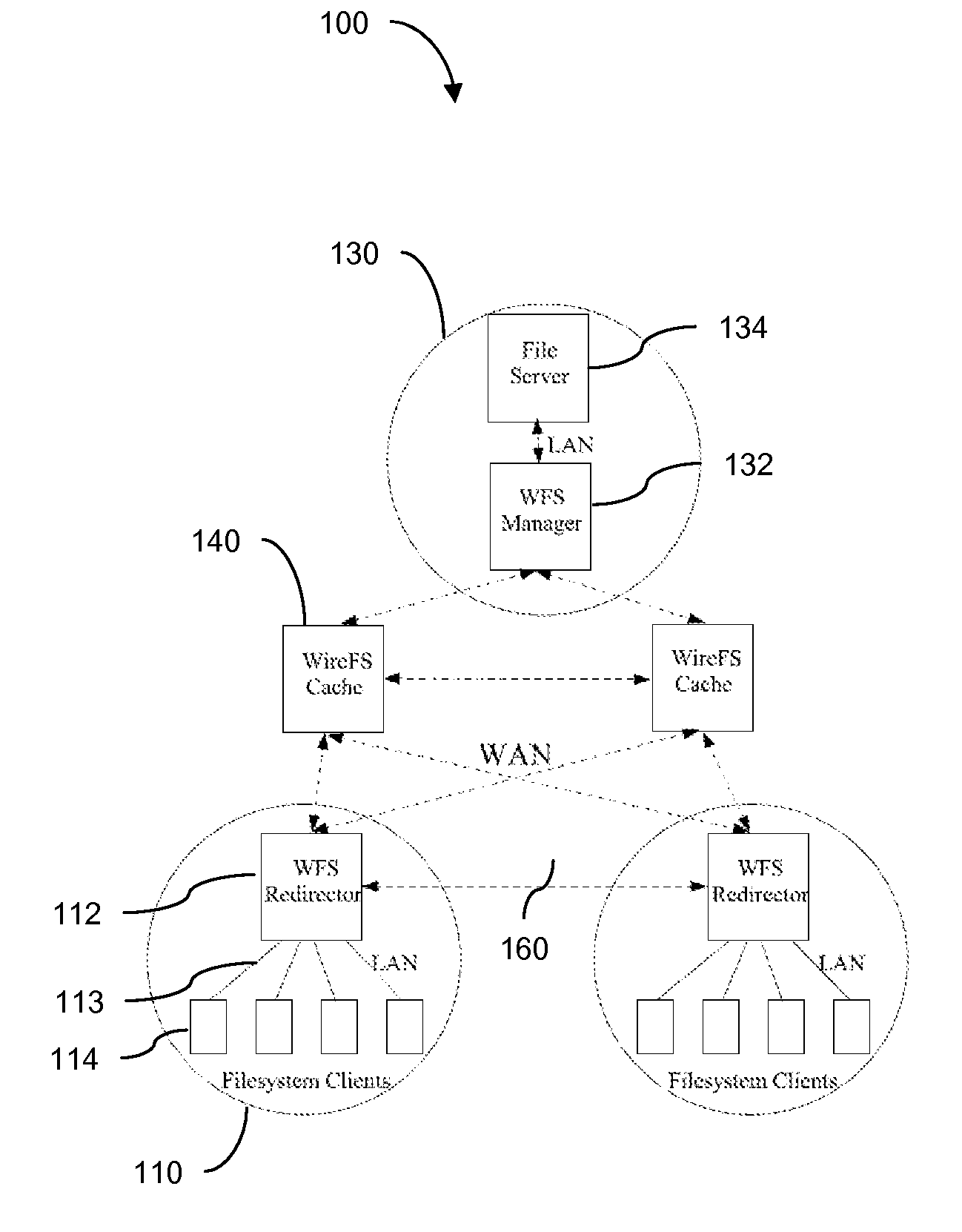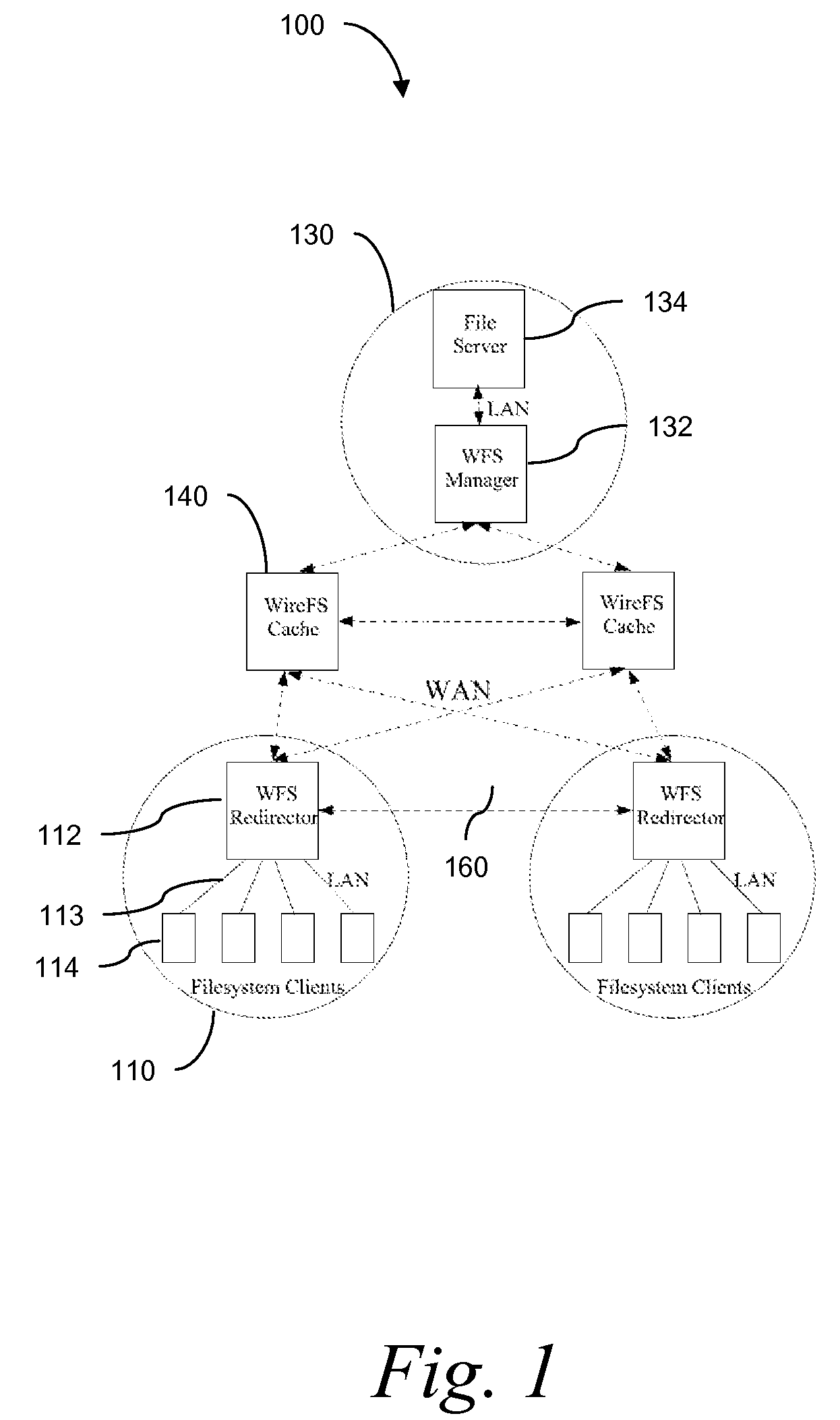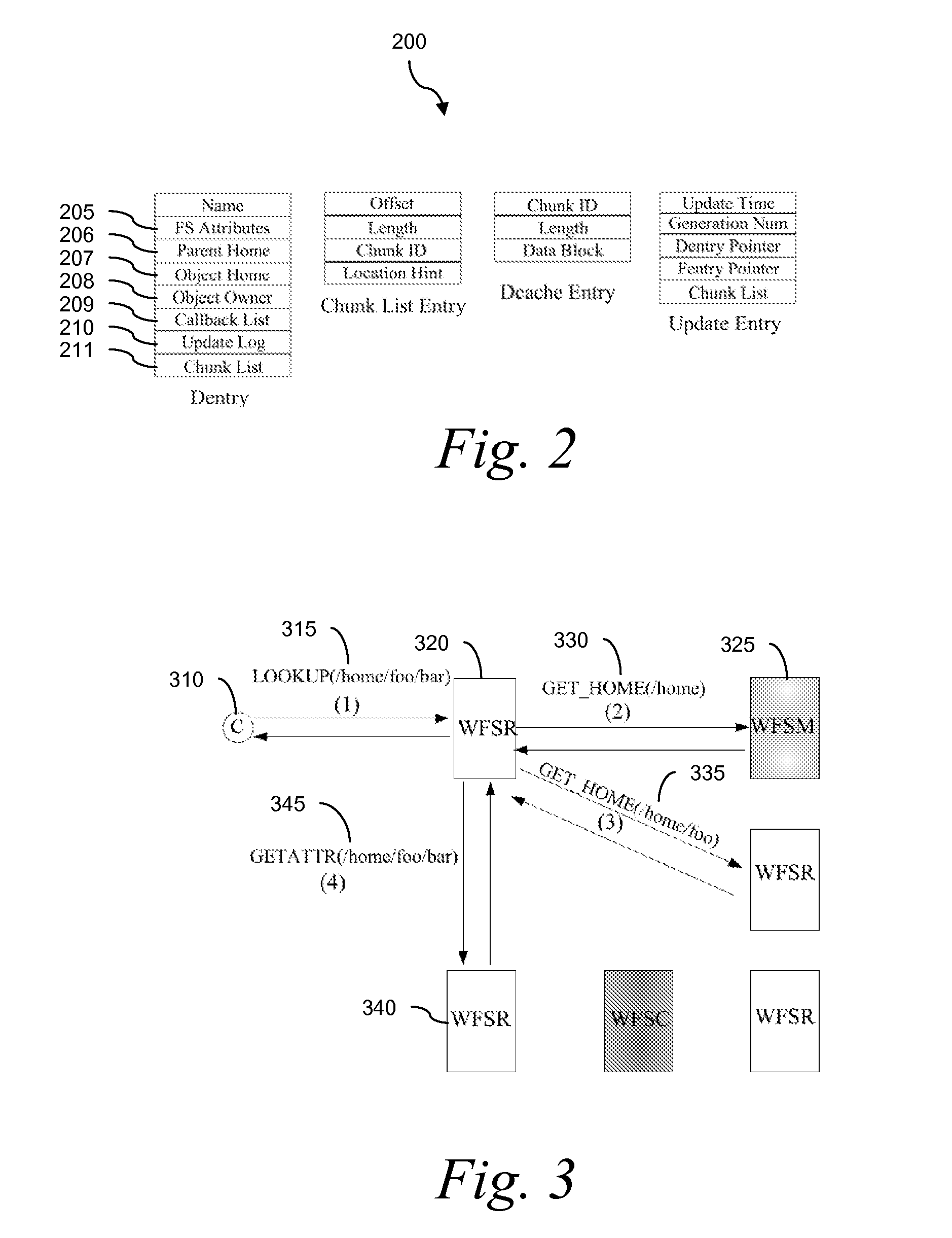Wide Area Networked File System
a file system and wide area network technology, applied in the field of wide area networked file systems, can solve the problems of wasting bandwidth, slow and unreliable file access, and file systems that are susceptible to significant slowdowns, and achieve the effect of eliminating the overhead of repeated round-trips and alleviating the bottleneck at the central server
- Summary
- Abstract
- Description
- Claims
- Application Information
AI Technical Summary
Benefits of technology
Problems solved by technology
Method used
Image
Examples
example
[0089] The lookup operation in WireFS is illustrated in FIG. 3. Before issuing any file read or write operation, the client 310 issues a LOOKUP 315. The WFSR 320 looks up the home of the file. Only two levels of indirection are shown in FIG. 3: the WFSR 320 contacts the WFSM 325 and receives (exchange 330) the location of the home of the parent's parent. The WFSR 320 then looks up (exchange 335) the home of the parent. By reading the parent directory contents, the client WFSR 320 identifies the home 340 of the target file and requests (exchange 345) the attributes of the file.
[0090] The operation of a file read is shown in FIG. 4. The client 410 presents the file handle (exchange 415) returned in the lookup. Since the home of the file is known, the WFSR 420 retrieves (exchange 425) the file attributes from the home 430. In WireFS, each file is divided in chunks and a list 450 of these chunks is associated with the file attributes. The file attributes also contain a possible locatio...
PUM
 Login to View More
Login to View More Abstract
Description
Claims
Application Information
 Login to View More
Login to View More - R&D
- Intellectual Property
- Life Sciences
- Materials
- Tech Scout
- Unparalleled Data Quality
- Higher Quality Content
- 60% Fewer Hallucinations
Browse by: Latest US Patents, China's latest patents, Technical Efficacy Thesaurus, Application Domain, Technology Topic, Popular Technical Reports.
© 2025 PatSnap. All rights reserved.Legal|Privacy policy|Modern Slavery Act Transparency Statement|Sitemap|About US| Contact US: help@patsnap.com



